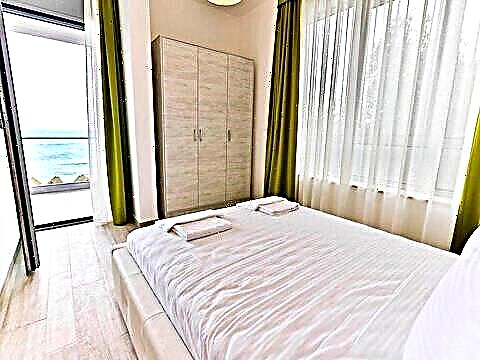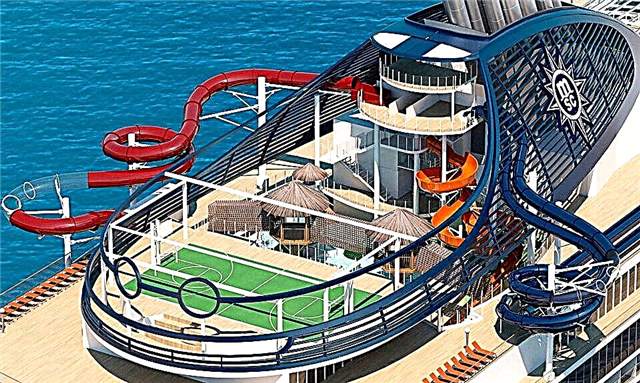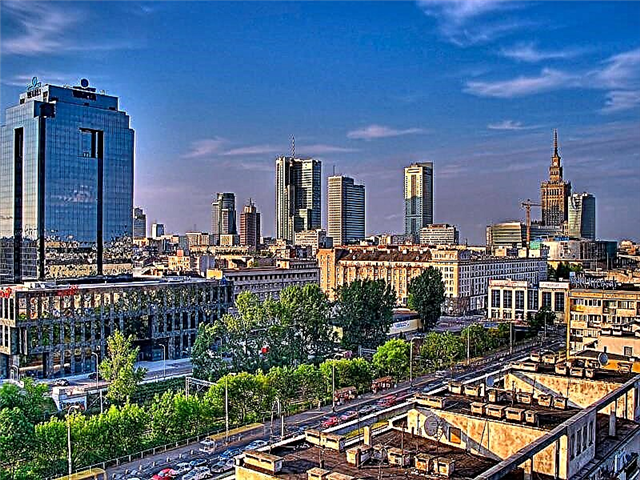Address: Russia, Moscow, Kuzminki-Lyublino park (Kuzminki metro station)
Main attractions: western and eastern wings, Equestrian yard, Orangery, Temple of the Blachernae icon of the Mother of God, Poultry yard
Coordinates: 55 ° 41'22.9 "N 37 ° 47'21.3" E
Cultural heritage site of the Russian Federation
Content:
The history of the estate
The Kuzminki estate is considered one of the most beautiful estates in Moscow and the Moscow region. Previously, it belonged to the Stroganov barons and the Golitsyn princes. The plot of land on which this luxurious estate was built was received by Grigory Dmitrievich Stroganov in 1702 for good service from Peter I. Such a generous gift meant a special relationship of the tsar to his entourage.

Temple of the Blachernae Icon of the Mother of God
The estate was built in the 18th century and was distinguished by exemplary order. The courtyard with picturesque parks, ponds, bridges and even islets has always been attractive to guests. The Kuzminki estate (the exact name is Vlakhernskoye-Kuzminki) at various times received visits from the Russian emperors - Alexander II, Nicholas I and Peter I.
Pavel I's wife, Maria Feodorovna, also loved to be here. Every year, festivities were held in the luxurious estate and foreign delegations were gathered. Since the end of the 19th century, the estate has become a favorite summer cottage for its owners, the architecture and park area of which were so unusual that over time the territory began to be called "Russian Versailles".

Horse yard
Excursion to the Kuzminki estate
To get to the estate, you need to take the metro to the Volzhskaya station. Here the gates with an attractive inscription "Vlakhernskoe-Kuzminki" are cordially thrown open in front of the visitors. A road leads to the estate, which runs past a cascade of ponds in the valley of the Churilikha River.
One of the main architectural monuments of the estate is the Equestrian Yard, erected in 1805, but later rebuilt according to a new project by the best architect of that time, Domenico Gilardi. Those wishing to inspect it should go to the bridge thrown over the dam. From here you can see the buildings built in the traditions of the Empire style, the most fashionable architectural trend of the early 19th century.

Wing
The Konniy Dvor complex unites several buildings. This is the stable itself, several sheds intended for carriages, and outbuildings that were used for living. The center of this simple composition is the Music Pavilion. Here are the best works of the sculptor Pyotr Karlovich Klodt - copies of statues installed on the Anichkov Bridge in St. Petersburg. Klodt himself created statues for the estate, and they were cast at a factory owned by Golitsyn.
On the opposite side of the dam stands the Mill Wing, which is also called the House on the Dam. It appeared after 1840 on a mill plinth. If you believe the legend, the ancient Kozminki mill, owned by the miller Kozma, gave the local places a similar name “Kuzminki”. The mill has repeatedly undergone changes, each time getting better and better, thanks to the skillful actions of experienced architects Gilardi, Zherebtsov, Voronikhin and Egotov.

Poultry House (Forge)
However, later the need for the mill disappeared. In the middle of the 19th century, its upper floors were demolished, and the basement was used for the construction of the House on the Dam. This was done under the guidance of the architect M. Bykovsky. This is how the former mill became a two-storey wooden building built in the tradition of the Renaissance.
Although the house is surrounded by water, it has always remained comfortable for living. The owners of the estate settled their guests here, and until 1976 the Mill Wing was rented out for summer cottages. Later it housed the Veterinary Museum. And today the old building can be seen restored.

Bathroom house
One of the inconspicuous corners of the estate is the Poultry House or the Smithy, lost among the greenery on Zarechye Street. At one time it was the center of the Poultry Yard, intended for breeding poultry. In addition to the usual geese, ducks and turkeys, exotic species of birds also walked along it.
Initially, the poultry house was built of wood, but was later rebuilt as a stone one by the project of the architect Ivan Vasilyevich Egotov. The small house was most likely intended for the caretaker of the Aviary. When Napoleon's troops retreating from Moscow in 1812 started a fire, the building was seriously damaged, and the birds that lived here died.

Barnyard
Later, when the buildings began to be restored, the Poultry House was turned into a Forge, where horseshoes were forged for the Horse Yard. The building was made two-story, and the wings with galleries were dismantled. Its dome was dismantled and replaced with a gable roof. In this performance, he stood until the middle of the last century. During the Soviet era, the building was used as a residential building, making an extension around it. But in the 2000s, the Poultry complex was restored.
The building of the Kitchen, which can be ignored due to its discreet appearance, is a real value for connoisseurs of Russian architecture. The kitchen is built in the Empire style. But if you look at it more closely, you can see many elements of ancient Egyptian architecture. For this reason, the Kitchen is also called the Egyptian Pavilion.

Grottoes
Church of the Blakherna Icon of the Mother of God - the main attraction of the Kuzminki estate
The first building of the temple was built in 1716, even under the Stroganovs. The wooden church got its name in honor of the family icon of the owners of the estate - Our Lady of Blakherna. However, the temple stood only until 1732 and burned down. Soon a new wooden church was erected here. After 26 years, a fire broke out again, and she disappeared into his flames. Finally, by 1762, a third stone temple was built, which has survived to this day.
For a long time, the icon of Our Lady of Blachernae served as its decoration. It was written in the Blachernae monastery of Constantinople in the 7th century. The icon was brought to our country in 1653 for a gift to Tsar Alexei Mikhailovich. He greatly appreciated the ancient icon and took care of it.

Gardener's house. Moscow Literary Museum - K.G. Paustovsky Center
The execution of the Blachernae icon is very unusual. It was written in a rare technique - waxing. In a wax layer, it contains particles of the relics of Christian saints. One of the ancient legends testifies that in 626, thanks to the divine power emanating from the icon-painting image, the enemies who came to take Constantinople by force retreated. Much later, in 1830, the miraculous shrine again showed its power in Russia. During the cholera epidemic, not a single inhabitant of Blakhernsky became infected.
The grottoes are a great addition to the Empire manor park
The grottoes can be seen opposite the Music Pavilion. There are two of them and they appeared immediately after the construction of the Main Courtyard was completed. When leveling the plot of land on which it was planned to arrange grottoes, a slope appeared on the bank of the pond. Subsequently, it was filled with artificially created "caves".

The pier
On a summer day, the grottoes became a hideout for the strolling public. The Golitsyns did not have their own theater, and performances were staged in one of the grottoes. Both guests and hosts took part in them. A large grotto was specially built not far from the Music Pavilion. When music was played there, it resonated in the cavity of the grotto, and the illusion of surround sound was created.
A museum that tells about the culture of Russian estates
You can learn about the history of the estate and its traditions in the so-called Servant Wing, located on Slobodka. Thanks to authentic exhibits, each visitor to the museum gets the opportunity to feel the atmosphere of the 18th - 19th centuries, which conveys the everyday life of the nobles. The clerical wing took over the museum expositions in 1999. Interesting costumed excursions are held here.

Manor bridge
There are two more unusual museums in the estate. Since 1987, the Literary Museum of Konstantin Georgievich Paustovsky has been occupying the Gray Dacha, it is also called the Gardener's House.
Nearby is the Museum of Honey, near which, since 2005, there has been a monument to the bee. Inside, the "honey" museum looks like an apiary with beehives. Here, visitors can wear special costumes and learn about the honey production process in practice. And for real sweet tooth and enthusiastic biologists, the doors of the Honey Lovers Club and the School of Practical Beekeeping are always open.











